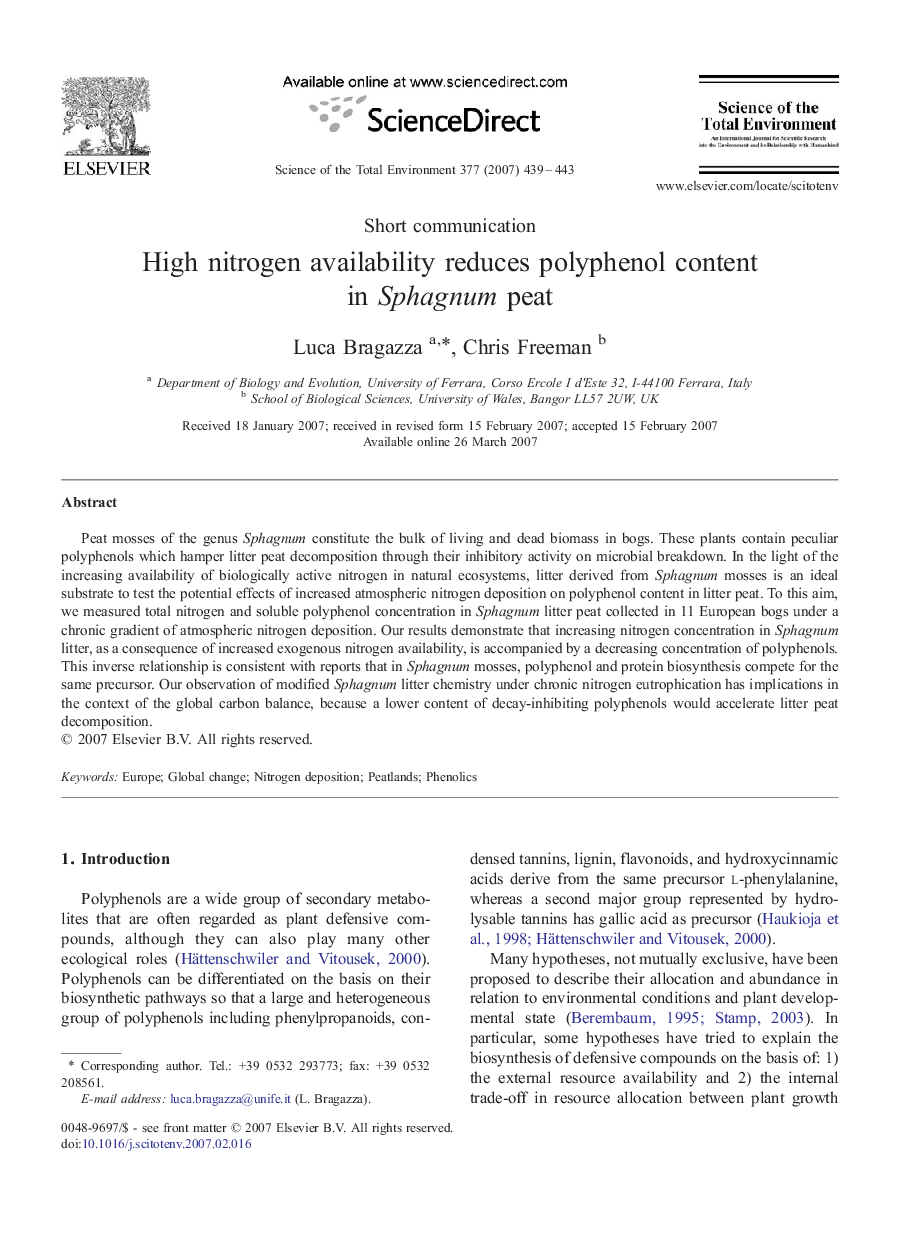| Article ID | Journal | Published Year | Pages | File Type |
|---|---|---|---|---|
| 4433442 | Science of The Total Environment | 2007 | 5 Pages |
Peat mosses of the genus Sphagnum constitute the bulk of living and dead biomass in bogs. These plants contain peculiar polyphenols which hamper litter peat decomposition through their inhibitory activity on microbial breakdown. In the light of the increasing availability of biologically active nitrogen in natural ecosystems, litter derived from Sphagnum mosses is an ideal substrate to test the potential effects of increased atmospheric nitrogen deposition on polyphenol content in litter peat. To this aim, we measured total nitrogen and soluble polyphenol concentration in Sphagnum litter peat collected in 11 European bogs under a chronic gradient of atmospheric nitrogen deposition. Our results demonstrate that increasing nitrogen concentration in Sphagnum litter, as a consequence of increased exogenous nitrogen availability, is accompanied by a decreasing concentration of polyphenols. This inverse relationship is consistent with reports that in Sphagnum mosses, polyphenol and protein biosynthesis compete for the same precursor. Our observation of modified Sphagnum litter chemistry under chronic nitrogen eutrophication has implications in the context of the global carbon balance, because a lower content of decay-inhibiting polyphenols would accelerate litter peat decomposition.
